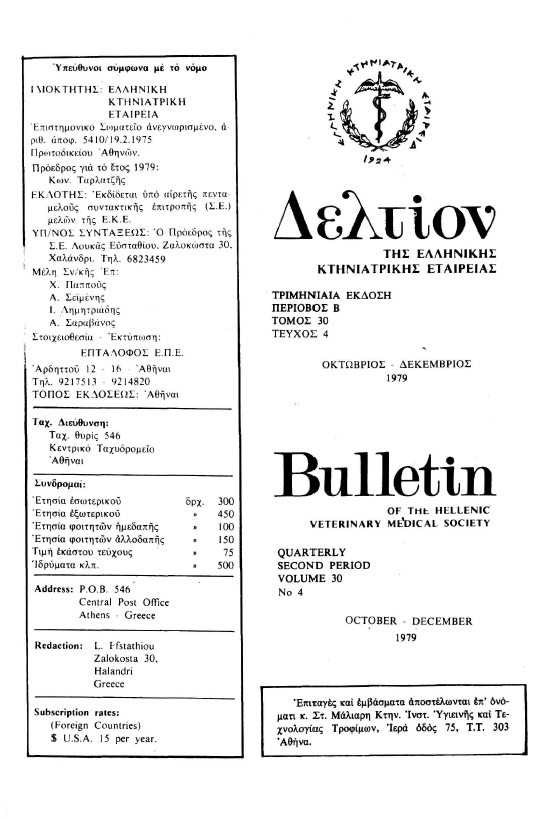Induced oestrus in lactating sows by administration of PMS and HCG
Abstract
The experiment was conducted in a livestock unit of 500 brood sows and comprised a total of 40 animals of the same genetic potential and living under the same management conditions. Of the above animals. 20 were used as controls (group Tl), while the remaining 20 (group T2) were treated as follows: a) on day 23 after farrowing, they were injected with. 1000 i.u. PMS, b) on day 24 they were injected with 300 i.u. of HCG, c) on days 21-24 the litters were removed from their dams for 12 hours daily, d) on days 26-31 the sows were exposed to the presence of the boar, for 30' every morning. All litters of both groups were weaned on day 35 after farrowing. There were no significant differences in litter size, survival and body weight of piglets to the 35th day, as well as in the yields of the animals at the subsequent parturition. The sows of group Tl came into oestrus on day 44.75 ± 1.1 d. (85% of the sows in oestrus - conception rate 90%), while those of group T2 came into oestrus on day 35.85 ± 1.4 d. (80% of the sows in oestrus - conception rate 75%) (P/0.001). The entire experimental work among the animals of group T2, however, caused considerable operational problems in the unit.
Article Details
- How to Cite
-
KYRIAKIS, S., ANDREOTIS, J., STOITSIOU, C., DONOS, A., & TSAKALOF, P. (2019). Induced oestrus in lactating sows by administration of PMS and HCG. Journal of the Hellenic Veterinary Medical Society, 30(4), 249–252. https://doi.org/10.12681/jhvms.21419
- Issue
- Vol. 30 No. 4 (1979)
- Section
- Articles

This work is licensed under a Creative Commons Attribution-NonCommercial 4.0 International License.
Authors who publish with this journal agree to the following terms:
· Authors retain copyright and grant the journal right of first publication with the work simultaneously licensed under a Creative Commons Attribution Non-Commercial License that allows others to share the work with an acknowledgement of the work's authorship and initial publication in this journal.
· Authors are able to enter into separate, additional contractual arrangements for the non-exclusive distribution of the journal's published version of the work (e.g. post it to an institutional repository or publish it in a book), with an acknowledgement of its initial publication in this journal.
· Authors are permitted and encouraged to post their work online (preferably in institutional repositories or on their website) prior to and during the submission process, as it can lead to productive exchanges, as well as earlier and greater citation of published work.



